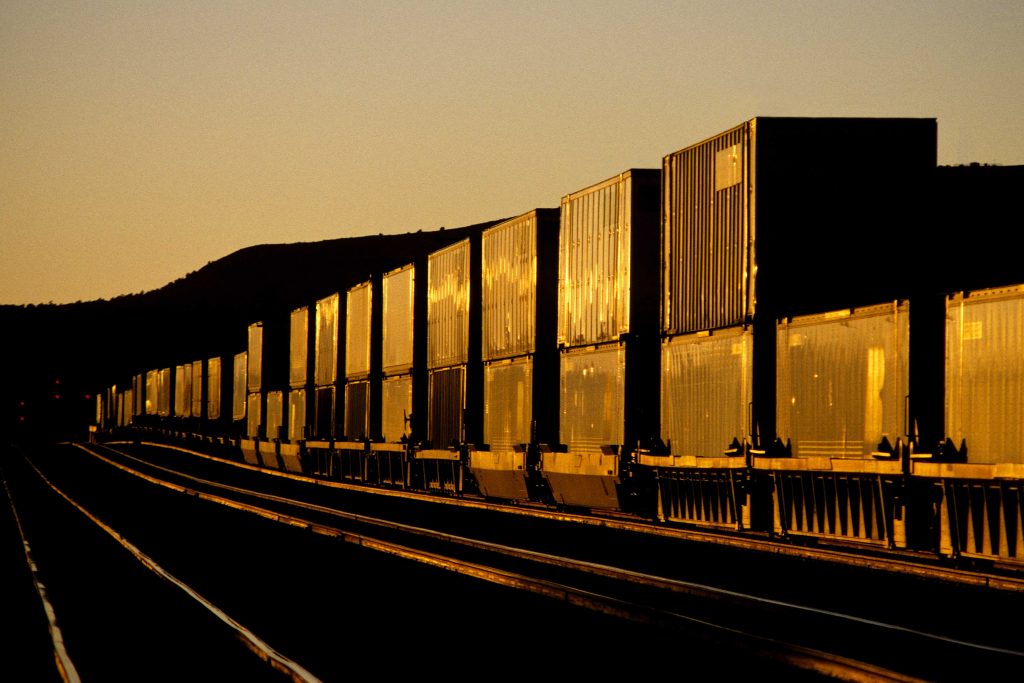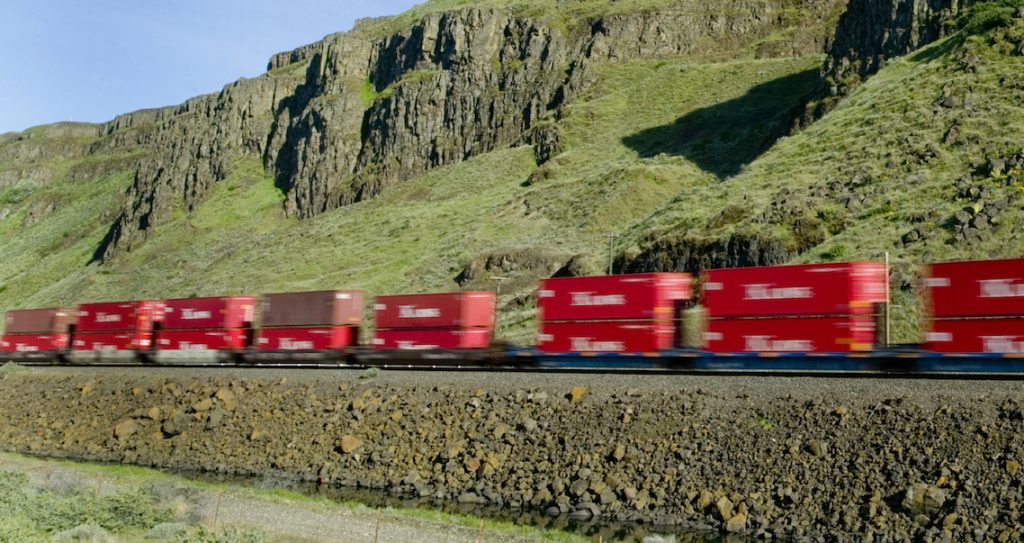The Express Lane for Freight by Rail

Washington, D.C. — Even some of the most commonly used freight railroading terms can be mystifying to the average person. Indeed, when most people hear the word “rail” they think only of passenger trains – freight rail doesn’t even come to mind. Yet, in most every region of the country, freight trains are a critical part of the relay race to move goods to consumers and businesses as affordably and sustainably as possible. The fastest growing sector of rail traffic is also a key leg of this relay race in which freight is passed between ships, barges, trucks, and trains. It’s called rail intermodal.
Intermodal, by root definition, means “between modes.” Simply, intermodal transportation occurs whenever goods are moved using more than one mode of transportation. In the context of freight rail, the classic example of intermodal service is goods arriving at a seaport via ship, being transported for the long haul over land by train, and then being delivered locally by truck. In fact, the interconnected network of planes, trains, ships, barges and trucks delivers around 54 tons of goods per person each year in the U.S.
A key component of intermodal is the standardization of shipping containers, or containerization. Supply chain and logistics experts take great care to make sure the intermodal process happens as efficiently and cost-effectively as possible. While “piggybacking” truck trailers on railcars for transport has been around since the late 1800s, the development of the first intermodal shipping container in 1952 established intermodal as we know it today.
Standardized shipping containers allow freight to be moved from ship, to truck, to train without having to adjust for the different sizes and shapes of unique goods. And, containerization allows anything to be shipped, from greeting cards and furniture to grain, frozen chickens and computers.

Further, modifications to rail flatcars, which can be thought of as large, easy-to-load, heavy-duty skateboards, have allowed multiple containers to be loaded on a single well car in order to maximize capacity.
North American railroads have long invested to modernize their intermodal networks by building new terminals, increasing tunnel heights, strengthening rails, and deploying new technologies to maximize efficiency while cutting pollution. In fact, freight railroads spent and invested $710 billion in the rail network from 2018 to 2019.
These investments have paid off. In 2018, U.S. railroads moved a record 14.5 million containers. Intermodal is the largest source of revenue for U.S. railroads – more than any other single commodity group. And that trend is set to continue.

Rail intermodal is like the express carpool lane of freight transportation—commodities shipped by rail don’t get stuck in traffic and can travel much farther on the same amount of fuel as commodities shipped on highways. According to Dr. Jean-Paul Rodrigue, professor of global studies and geography at Hofstra University and Dr. Brian Slack, professor emeritus at Concordia University: “At the macro scale, new long-distance alternatives are emerging in the form of land bridges in North America and between Europe and Asia. In North America, rail has been very successful at servicing long-distance intermodal markets, underlining the efficiency of rail over long distances and high-volume flows.” As globalization pushes supply chains to look farther into the future, rail intermodal offers an invaluable service for long-distance, inter-regional trade.
For an industry in transition, intermodal transport is a supply chain innovation that gives railroads an opportunity to lead as the most efficient way to move freight over land. From efforts made to strengthen infrastructure, to investment in the research and application of new technologies, rail intermodal is a shining example of a supply chain innovation fueled by freight rail investment.

